Posts Tagged ‘IT’
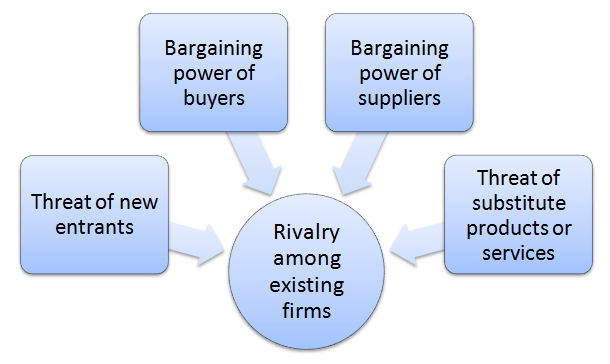
Porter’s Five Forces analytical framework developed by Michael Porter (1979)[1] represents five individual forces that shape the overall extent of competition in the industry. Google Porter’s Five Forces are represented in Figure 1 below: Figure 1 Google Porter’s Five Forces Threat of substitute products or services for Google is low. Search remains as Google’s and Alphabet’s core business and it is used by more than a billion people around the globe every day. The threat of substitute for Google’s search can be assessed as low because it remains to be the most convenient and time-efficient way of finding needed information. The threat of substitute products and services for Google’s other services is moderate. For example, people can use mobile text messages or mobile messengers such as What’s Up instead of using Gmail and traditional paper maps can be used instead of Google maps. At the same time, it is important to note that although, there are some direct and indirect substitutes for all Google services, these substitutes do not offer the same level of user convenience, functionality and speed. Accordingly, the threat of substitute products and services for products and services offered by Google can be generally assessed as low. Rivalry among existing firms is fierce. General purpose search engines and information services, such as Microsoft’s Bing, Yahoo, Yandex, Baidu, Naver, and Seznam represent competition for Google search. There are also vertical search engines and e-commerce websites, such as Amazon and eBay (e-commerce), Kayak (travel queries), LinkedIn (job queries), and WebMD (health queries). Some users will navigate directly to such content, websites, and apps rather than go through Google. Social networks, such as Facebook and Twitter also belong to the list of Google competitors. Some users are increasingly relying on social networks for product or service referrals, rather than seeking…
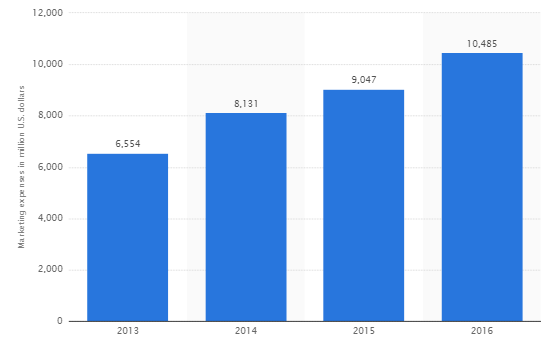
Alphabet (Google) marketing strategy integrates various online and offline marketing techniques. Alphabet’s marketing budgets and efforts mainly focus on main business – Google. It has been noted that “though you’ll never see an ad for the king of the search engines, this query behemoth employs some of the most subtle, yet fantastically impressive marketing strategies out there”[1] Beyond Google, Alphabet Inc. does not invest much resources and efforts to advertise its other projects such as Access, Calico, CapitalG, GV, Nest, Verily, Waymo, and X. This is because most of these projects are only on the stage of research and development and they do not have products and services ready to offer to the market. As it is illustrated in Figure 4 below, total annual marketing spending of the company has been consistently increasing during the past several years. Out of these amounts, for the years ended December 31, 2014, 2015 and 2016, advertising and promotional expenses totalled approximately USD3,004 million, USD3,186 million, and USD3,868 million, respectively[2]. Annual Alphabet Inc. (Google) marketing spending[3] Google marketing strategy is based on the following principles: Within the framework of marketing mix, focusing on product element to a greater extent compared to other elements. The majority of Alphabet products and services are innovative in their nature or they add innovative features to existing products and services. Targeting the broadest customer segment with multiple products and services. The company’s core business, Google offers a wide range of products and services such as Search, Android, Maps, Chrome, YouTube, Google Play, and Gmail that are used by billions of people every day worldwide. Using several elements of marketing communications mix in an integrated manner. Specifically, the internet giant uses sales promotion, events and experiences, public relations and direct marketing tools to company to communicate its marketing message to…
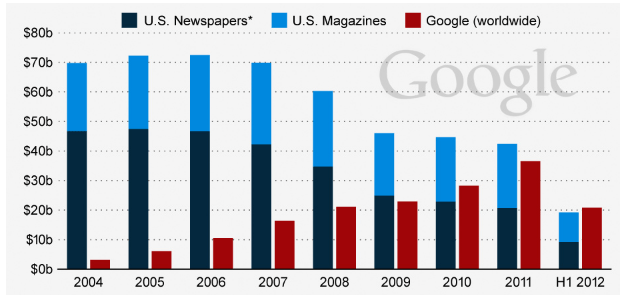
Google marketing communication mix explains the ways in which advertising, sales promotion, events and experiences, public relations and direct marketing tools are used by the company to communicate its marketing message to the target customer segment. Advertising Google emerged as a popular alternative for traditional print and media advertising and changed advertising industry worldwide to a great extent. As it is illustrated in figure below, by 2012 Google was generating more advertising revenues than print media in the US as a whole. The significance and market share of Google in the global advertising industry has increased even to a greater extent during the past five years, since 2012. Accordingly, owning a more significant advertising platform than print and media advertising, Google does not use traditional print and media advertising to communicate its marketing message to the target customer segment. Revenues by print media in the US and Google (worldwide)[1] Sales Promotion Sales promotion refers to the “stimulation of sales achieved through contests, demonstrations, discounts, exhibitions or trade shows, games, giveaways, point-of-sales displays and merchandising, special offers and similar activities”[2]. Google employs sales promotion marketing techniques rarely. The most noteworthy case relates to one day sales promotion of Google Glass via online purchase for USD1,500[3] and the promotion of Android 4.4 in cooperation with candy bar KitKat, owned by Nestle International Travel Retail. Up to date Google does not use popular sales promotions techniques such as seasonal sales promotions, money off coupons, competitions, discount vouchers, free gifts or loyalty cards… Alphabet Inc. (Google) Report contains a full analysis of Google marketing communication mix and Google marketing strategy in general. The report illustrates the application of the major analytical strategic frameworks in business studies such as SWOT, PESTEL, Porter’s Five Forces, Value Chain analysis and McKinsey 7S Model on Google. Moreover, the report…

Alphabet (Google) segmentation, targeting and positioning efforts can be explained as the essence of company’s marketing efforts. Segmentation divides population into groups on the basis of specific characteristics. Targeting refers to choosing certain groups identified as a result of segmentation to sell products and services. Lastly, positioning refers to the selection of the marketing mix the most suitable for the target customer segment. Google uses the following types of positioning: Multi-segment positioning. The company offers a wide range of products and services such as Search, Android, Maps, Chrome, YouTube, Google Play, and Gmail that target multiple customer segments Standby positioning. Certain products within Alphabet portfolio such as robotics, Waymo self-driving cars, Lunar XPRIZE space exploration program, 3D mapping and others may not have a clear target customer segment at this stage. Nevertheless, these products and projects are awaiting changes in the market for the demand to emerge. Imitative positioning. Google has used imitative positioning in a few instances. The launch of Chrome browser to imitate then-market leader Internet Explorer and the launch of G+ social networking site to imitate Facebook can be mentioned to illustrate this point. The following table illustrates Google segmentation, targeting and positioning: Type of segmentation Segmentation criteria Google target customer segment Geographic Region Global scale Density Urban and rural Demographic Age Anyone older than 12 years old Gender Males & Females Life-cycle stage Bachelor Stage young, single people not living at home Newly Married Couples young, no children Full Nest I youngest child under six Full Nest II youngest child six or over Full Nest III older married couples with dependent children Empty Nest I older married couples, no children living with them Empty Nest II older married couples, retired, no children living at home Solitary Survivor I in labour force Solitary Survivor II retired…

Alphabet (Google) marketing mix, also referred to as Alphabet (Google) 7Ps of marketing comprises elements of the marketing mix that consists of product, place, price, promotion, process, people and physical evidence. Product. Alphabet Inc. is a holding company and its portfolio comprises nine companies. Products and services offered by these companies are illustrated in table below: Company Products and services Google Search, Android, Maps, Chrome, YouTube, Google Play, and Gmail Waymo Self-driving cars Verily Miniaturized CGM, Smart Lens Program, Debug, Retinal Imaging etc. Calico Research and development projects focused on ageing Nest Indoor and outdoor cameras, learning thermostats, and smoke alarms Access High-speed fiber internet access across the U.S X Projects associated with “moonshot” technologies Capital G Equity investment fund GV Venture capital Companies in Alphabet portfolio and products and services offered by them It is important to note that although Alphabet product portfolio is vast and diverse, Google remains as its core business accounting for 88% of total revenues in 2016 through advertising[1] Place. Being an e-commerce and internet company, Google relies on online sales channel for the sales of its products and services. In 2015 the company opened its first physical store and up to date, there are only a few Google physical stores in various formats in North America and the UK. Google’s first physical store in London, is a “shop in a shop” located inside the Currys PC World store on Tottenham Court. “In addition to showcasing Google merchandise—Chromebooks, Chromecasts, Android phones, and so on—the space includes a “Doodle Wall” for customers to scribble on with digital spray paint, a “Chromecast Pod” for movie viewing, and a “Portal” for touring the planet via Google Earth.”[2] It has to be noted that place element of the marketing mix does not relate to certain companies belonging to Alphabet portfolio…
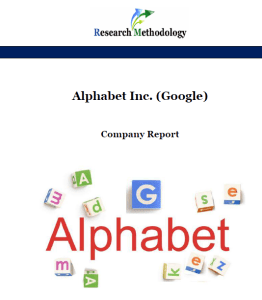
Founded by Stanford University students Larry Page and Sergey Brin in 1998, Google dominates almost all of its markets and the company is well-known for its culture of creativity and innovative approach to develop new products and services. Google offers a wide range of interrelated internet-based products and services that are aimed at satisfying personal and professional needs in terms of communication, recreation, organization and increasing the level of performance and effectiveness. Google Inc. was restructured in 2015 to become Alphabet Inc. “Google’s search product became a wholly owned subsidiary of a new parent company, Alphabet, with other Google projects and teams spun out into separate “Alphabet companies,” each with its own CEO.”(Price and Nudelman, 2016, online). Alphabet Inc. is a holding company with no business operations of its own. Google is the largest business within Alphabet Inc. product portfolio. The company’s product portfolio also comprises Access, Calico, CapitalG, GV, Nest, Verily, Waymo, and X. The company classifies it’s all non-Google businesses as Other Bets. In fiscal year 2016, Alphabet Inc. generated revenues of USD90.3 billion and revenue growth of 20% year over year, with constant currency revenue growth of 24% year over year. Google segment generated revenues of USD89.5 billion, with revenue growth of 20% year over year. Other Bets revenues of USD0.8 billion with revenue growth of 82% year over year. Revenues from the United States, the United Kingdom, and Rest of the world were USD42.8 billion, USD7.8 billion, and USD39.7 billion, respectively (Annual Report,2016). The company has more than 72,000 full-time employees worldwide. Google core business strategy is business diversification and introduction of new products and services in a regular manner. Google business strategy is also based on the development of a closed eco-system to motivate customers to use greater range of products and services. Customers usually…
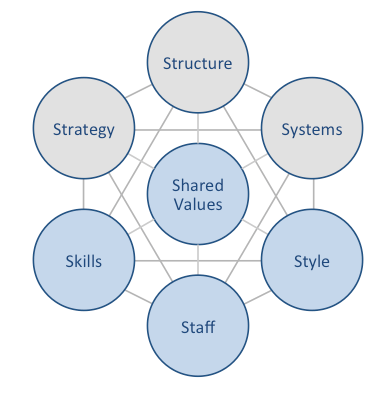
Samsung McKinsey 7S model attempts to explain how seven individual elements of the business can be aligned to increase effectiveness. According to this model strategy, structure and systems represent hard elements, whereas shared values, skills, style and staff are soft elements. McKinsey 7S model argues that there are strong links between elements in a way that a change in one element causes changes in others. As it is illustrated in figure below, shared values are positioned at the core of Samsung McKinsey 7S model, since shared values guide employee behaviour with implications in their performance. Samsung McKinsey 7S model Hard Elements Strategy. Samsung business strategy is mainly based on market readership, i.e. replicating innovations made by market leaders in terms of introducing new products and/or adding innovative features to new products. Samsung’s major competitor, Apple can be specified as company Samsung mainly replicates from. Moreover, Samsung business strategy is based upon scanning and utilising opportunities in the market and new product development on a regular basis. Structure. Samsung organizational structure is divisional and the company is divided into three divisions on the basis of products: IT & Mobile Communications (IM), Consumer Electronics (CE), and Device Solutions (DS). Each division is managed separately according to unique aspects and characteristics of its products. As the outcome of review of optimal organizational structure completed on April 2017, the senior management decided not to shift to holding pattern of organizational structure. Nevertheless, Samsung organizational structure may change in medium term perspective. This is due to a series of scandals the company had to deal with recently, including the imprisonment of Jay Y. Lee, a former Samsung executive and founding family member for his role in bribery and embezzlement. Systems. Samsung’s long-term growth prospects depend on smooth running of a wide range of systems. These…

Introduction The 21st century has been dubbed as an information age (Bell and Blanchfower, 2011) and internet in general, and social media in particular are playing an instrumental role in facilitating the spread of information throughout the globe at a rapid speed. Moreover, increasing levels of interactivity of social media platforms is further contributing to the level of their popularity, and nowadays social media has been effectively adopted by many businesses along a wide range of industries as a highly effective marketing and communication platform. At the same time, the level of use of social media varies between various industries, as well as, individual organisations within a particular industry, and while some organisations are beginning to realise substantial opportunities offered by social media, others are already utilising these opportunities to a full extent. This essay contains a critical evaluation of the influence of social media on the popularity of a tourism destination. The essay starts with discussions about increasing influence of social media on consumer behaviour. This is followed by critical analyses of potential benefits of social media to hospitality organisations. Moreover, issues related to negative impacts of social media on the performance of hospitality organisations are also addressed in this essay. Essay is concluded by providing a set of recommendations to strategic and marketing managers of hospitality organisations in terms of benefiting from opportunities offered by social media to a maximum extent. займ онлайн 19 лет Increasing influence of social media on consumer behaviour in service sector Social media can be defined as “websites and applications that enable users to create and share or to participate in social networking” (Oxford Dictionaries, 2013) and social media has had immense impact on personal and professional lives of many people around the globe at various levels. Types of social media include personal and corporate blogs,…

1. Introduction The level of competition in the global marketplace has become highly intensive and this fact is resulting in mergers and acquisitions between companies across countries and continents. There is no dispute that “mergers and acquisitions are a vital part of any healthy economy and importantly, the primary way that companies are able to provide returns to owners and investors” (Sherman and Hart, 2006, p. 1). However, in reality a range of issues may arise in mergers caused by cross-cultural differences, differences in management style, clash of personalities within senior level management and other reasons. This report attempts to analyse issues associated with Alcatel-Lucent merger failure. The report contains analysis of factors that enabled the merger to take place and the analysis of performance of company in present. Moreover, discussions are provided about cross-cultural issues at Alcatel-Lucent and new challenges for the company in an international area are described. 2. Factors that Allowed Merger in 2006 There were previous negotiation talks between Alcatel and Lucent in 2001 regarding the merger of the two companies. However, negotiations had failed due to suspicions of Lucent management that Alcatel was approaching the proposal like a takeover of Lucent, rather than ‘merger of equals’. The concept of “merger of equals” has been described as “a merger framework usually applied whenever the merger participants are comparable in size, competitive position, profitability, and market capitalisation” (DePamphilis, 2009, p.18). However, some circumstances have changed by 2006 that resulted in renewed merger talks between Alcatel and Lucent. First, the level of competition in mobile telecommunication and internet industry has intensified and the two companies needed to merge in order to be able to compete with Chinese manufacturers and other industry leaders. Second, as a result of numerous negotiations between the two companies on top level Lucent senior…
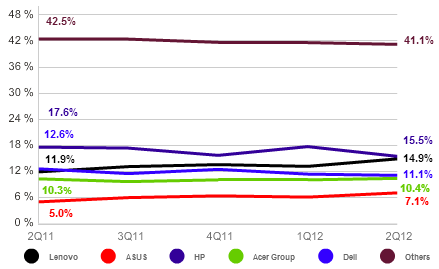
1. Introduction Rapid and dramatic changes in consumer technology market in the global scale are compromising the effectiveness of competitive advantage for many players in the marketplace. Hewlett-Packard Company (HP) can be specified as one of the giants in the industry and the company is finding difficult to address modern challenges in its market in an effective manner. HP is experiencing loss of sales and profitability due to a combination of certain factors discussed in this paper. Behind the overall 7% sales decline in the third quarter of 2012 lay 25% decline of sales of PCs and 15% decline of consumer printers (Walters, 2012). The public acknowledgement of the issue of declining profitability and pessimistic sales growth forecast made by HP President and CEO Ms. Meg Whitman on October 3, 2012 has caused the fall of HP share prices by 11% on the same day. Moreover, according to estimations of a global research agency, Millward Brown (2012), HP brand value has declined 35% in 2012 compared to 2011, and the company has moved down from 18th place to 26th in the list of Top 100 Most Valuable Global Brands within the same period. This article represents a critical analysis of declining profitability of HP using an analytical method. The article starts with introducing HP corporate profile and relevant background information. This is followed by a critical analysis of major factors contributing to the loss of profitability at HP. Namely, factors discussed in a detailed manner include increasing popularity of computer tablets, economic uncertainties in Europe, and leadership challenges. Moreover, this article proposes recommendations for HP senior level management in dealing with its current problem of declining profitability and contributing to long-term growth of the company. 2. HP: Corporate Profile Founded in 1939 by W.R. Hewlett and D. Packard, HP has been…
